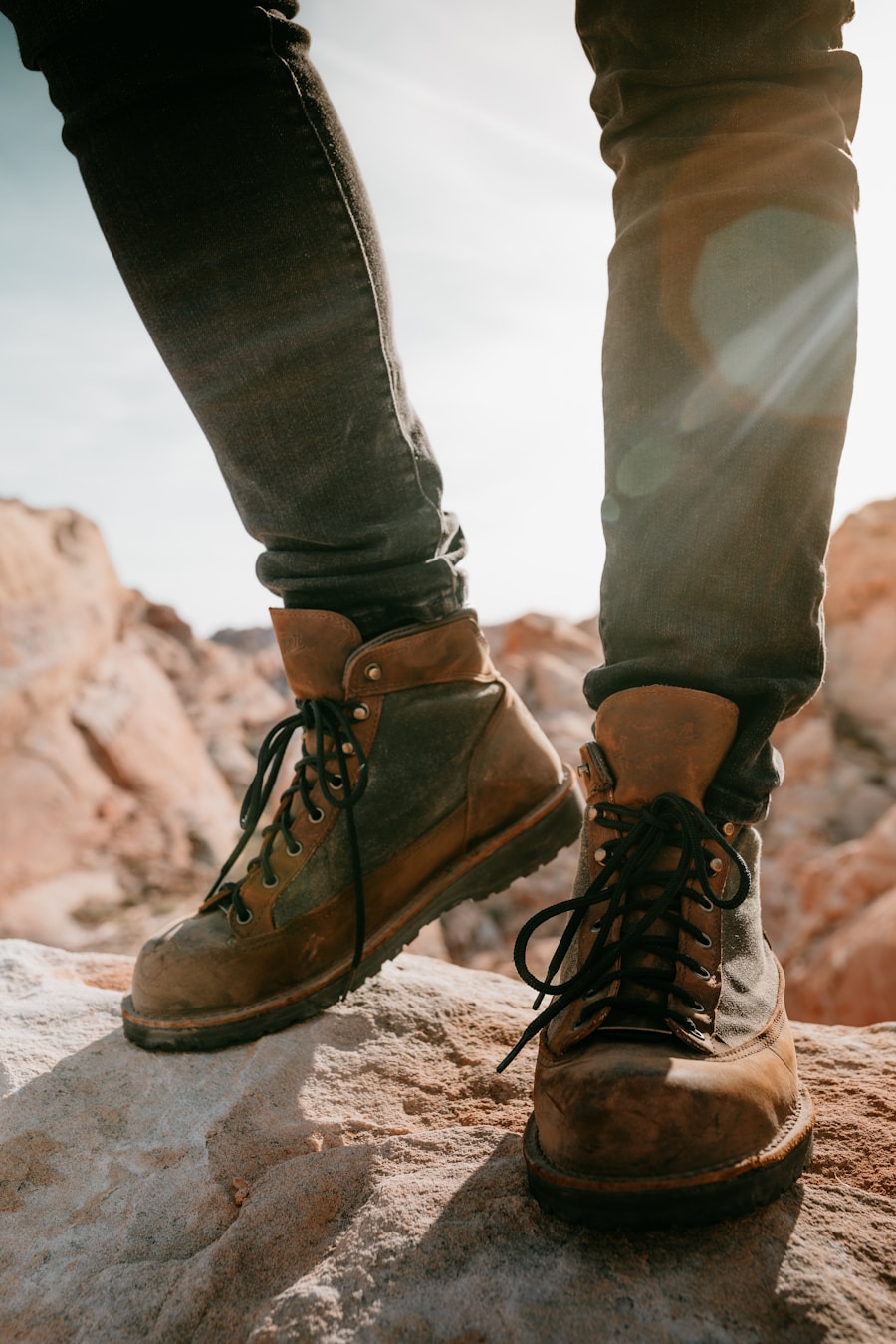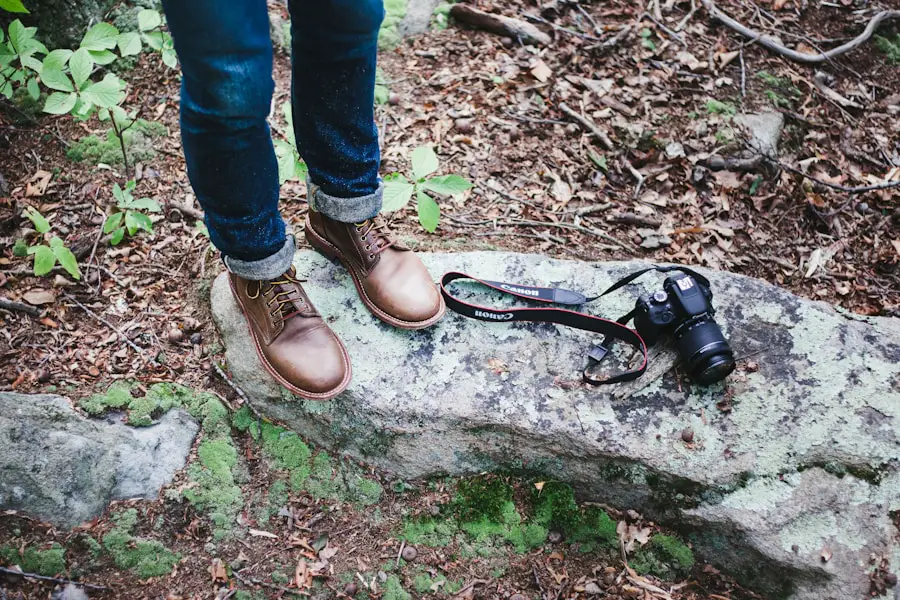Combat boots have long been associated with military personnel, symbolizing durability, resilience, and functionality. Originally designed to withstand the rigors of combat, these boots have transcended their military origins and found a place in various outdoor activities, including hiking. The rugged terrain and unpredictable weather conditions encountered on hiking trails demand footwear that can provide both protection and comfort.
As outdoor enthusiasts seek versatile options for their adventures, combat boots emerge as a compelling choice. Their robust construction and supportive design make them an appealing alternative to traditional hiking boots, prompting a closer examination of their suitability for hiking. The popularity of combat boots in the hiking community can be attributed to their unique blend of features that cater to the needs of hikers.
With a focus on stability, traction, and protection, these boots offer a different approach to outdoor footwear. However, the question remains: are combat boots truly suitable for hiking? To answer this, it is essential to explore the characteristics of combat boots, the specific considerations for hiking footwear, and the advantages and disadvantages of using combat boots on the trails.
By delving into these aspects, we can better understand whether combat boots are a viable option for hikers seeking reliable footwear.
Key Takeaways
- Combat boots are sturdy and durable footwear designed for military use, while hiking boots are specifically designed for outdoor activities such as hiking and trekking.
- Combat boots are typically made of heavy-duty materials such as leather and have a high ankle shaft for added support and protection.
- When considering hiking footwear, it’s important to take into account factors such as terrain, weather conditions, and personal comfort preferences.
- Using combat boots for hiking can provide excellent ankle support, durability, and protection from rough terrain and harsh weather conditions.
- Drawbacks of using combat boots for hiking include their heavy weight, lack of breathability, and potential discomfort during long hikes.
Characteristics of Combat Boots
Combat boots are designed with several key characteristics that set them apart from other types of footwear. One of the most notable features is their construction, which typically includes a high ankle design. This design provides additional support to the ankle, reducing the risk of sprains and injuries on uneven terrain.
The materials used in combat boots often include leather or synthetic fabrics that offer durability and resistance to abrasions. This rugged construction is essential for withstanding harsh conditions, whether in a military setting or on a challenging hiking trail. Another defining characteristic of combat boots is their sole design.
Most combat boots feature a thick rubber sole with deep treads that provide excellent traction on various surfaces. This is particularly important for hikers who may encounter slippery rocks, muddy paths, or loose gravel. The cushioning within the boot is also designed to absorb shock, enhancing comfort during long treks.
Additionally, many combat boots are waterproof or water-resistant, which can be a significant advantage when hiking in wet conditions. These features collectively contribute to the overall performance of combat boots, making them a formidable contender in the realm of hiking footwear.
Considerations for Hiking Footwear

When selecting footwear for hiking, several factors must be taken into account to ensure an enjoyable and safe experience on the trails. One of the primary considerations is fit. Properly fitting shoes are crucial for preventing blisters and discomfort during long hikes.
Hikers should consider trying on boots with the socks they intend to wear and ensure there is enough room in the toe box while still providing a snug fit around the heel. This balance is essential for maintaining stability and preventing foot fatigue. Another important consideration is the terrain and climate in which one will be hiking.
Different trails present unique challenges that may require specific features in footwear. For instance, rocky or uneven terrain may necessitate boots with enhanced ankle support and rugged soles for traction. Conversely, if hiking in warmer climates, breathability becomes a priority to prevent overheating and excessive sweating.
Additionally, hikers should consider the weight of their footwear; lighter options may be preferable for long-distance hikes where fatigue can set in quickly. Understanding these factors can help hikers make informed decisions about their footwear choices.
Benefits of Using Combat Boots for Hiking
| Benefits of Using Combat Boots for Hiking |
|---|
| 1. Durability |
| 2. Ankle Support |
| 3. Traction |
| 4. Water Resistance |
| 5. Protection |
| 6. Comfort |
Combat boots offer several benefits that make them an attractive option for hikers. One of the most significant advantages is their durability. Built to endure harsh conditions, combat boots can withstand the wear and tear associated with rugged trails.
This durability translates into longevity, meaning that hikers can rely on their combat boots for multiple seasons without worrying about premature degradation. Another benefit is the level of ankle support provided by combat boots. The high-top design helps stabilize the ankle joint, which is particularly beneficial when navigating uneven terrain or carrying heavy loads.
This support can reduce the risk of injuries such as sprains or strains, allowing hikers to focus on enjoying their journey rather than worrying about potential mishaps. Furthermore, many combat boots come equipped with cushioned insoles that enhance comfort during extended periods of wear, making them suitable for long hikes.
Drawbacks of Using Combat Boots for Hiking
Despite their advantages, there are also drawbacks to using combat boots for hiking that potential users should consider. One notable concern is weight; combat boots tend to be heavier than traditional hiking shoes or lightweight hiking boots. This added weight can lead to fatigue over long distances, especially when traversing challenging trails where every ounce matters.
Hikers seeking to minimize their load may find that lighter alternatives are more suitable for their needs. Another drawback is breathability. While many combat boots are designed with waterproof materials, this can sometimes come at the expense of ventilation.
Hikers may find that their feet become hot and sweaty during warmer months or on strenuous ascents, leading to discomfort and potential blisters. Additionally, the break-in period for combat boots can be longer than that of other hiking footwear; new users may experience discomfort until the boots conform to their feet properly. This factor can deter some hikers from choosing combat boots as their primary footwear.
Tips for Choosing the Right Combat Boots for Hiking

Selecting the right combat boots for hiking involves careful consideration of several factors to ensure optimal performance and comfort on the trails. First and foremost, it is essential to prioritize fit. Hikers should try on multiple pairs and walk around in them to assess comfort levels.
It’s advisable to wear the socks intended for hiking during this process to achieve an accurate fit assessment. A well-fitting boot should feel snug but not overly tight, allowing for some movement without causing friction. Additionally, potential buyers should pay attention to specific features that enhance performance in hiking conditions.
Look for combat boots with a robust sole that offers excellent traction; deep lugs are ideal for gripping various surfaces effectively. Waterproofing is another critical feature; consider whether you will be hiking in wet conditions frequently and choose accordingly. Finally, consider the weight of the boot; while durability is essential, finding a balance between sturdiness and weight will contribute significantly to overall comfort during long hikes.
Alternatives to Combat Boots for Hiking
While combat boots present a compelling option for hikers, there are numerous alternatives available that may better suit specific needs or preferences. Traditional hiking boots are designed explicitly for outdoor activities and often feature lightweight materials that enhance breathability while still providing adequate support and protection. These boots typically come in various styles, including low-cut shoes for day hikes and high-top models for more challenging terrains.
Trail running shoes have also gained popularity among hikers seeking lightweight options that allow for greater agility on the trails. These shoes often feature breathable mesh uppers and responsive cushioning systems designed for speed rather than heavy-duty support. For those who prefer a minimalist approach, sandals designed specifically for hiking can offer comfort and ventilation during warm-weather excursions while still providing adequate grip on various surfaces.
Are Combat Boots Suitable for Hiking?
The suitability of combat boots for hiking ultimately depends on individual preferences and specific hiking conditions. While they offer durability, ankle support, and rugged traction—qualities that are beneficial on challenging trails—they also come with drawbacks such as weight and potential breathability issues. Hikers must weigh these factors against their personal needs and preferences when selecting footwear.
For those who prioritize durability and support over weight considerations or who frequently hike in rugged environments, combat boots can be an excellent choice. However, individuals seeking lighter options or those who hike primarily in warmer climates may find more specialized alternatives better suited to their needs. Ultimately, understanding one’s own hiking style and requirements will guide the decision-making process when it comes to choosing the right footwear for outdoor adventures.
If you’re looking for the perfect footwear for your next hiking adventure, you may want to consider investing in a pair of combat boots. These sturdy and durable boots provide excellent ankle support and traction, making them ideal for navigating rough terrain. In fact, a recent article on TakeTravelInfo discusses the benefits of wearing combat boots while hiking and how they can enhance your overall outdoor experience. So lace up your boots and hit the trails with confidence!
Love travel? Join Our Facebook Community For More Tips.
FAQs
Are combat boots good for hiking?
Yes, combat boots can be good for hiking due to their durable construction and ankle support. However, it’s important to consider the specific terrain and conditions of the hike before choosing to wear combat boots.
What are the benefits of using combat boots for hiking?
Combat boots offer excellent ankle support, durability, and protection from rough terrain and inclement weather. They are also designed to provide stability and traction, making them suitable for various hiking conditions.
Are there any drawbacks to using combat boots for hiking?
While combat boots are durable and provide good ankle support, they can be heavier and less flexible than traditional hiking boots. This can lead to fatigue and discomfort, especially on longer hikes or when navigating uneven terrain.
What should I consider when choosing combat boots for hiking?
When choosing combat boots for hiking, consider the weight, breathability, and traction of the boots. It’s also important to ensure a proper fit and consider the specific terrain and weather conditions of the hike.
Can combat boots be used for different types of hiking?
Combat boots can be used for various types of hiking, including day hikes, backpacking trips, and hiking in rugged terrain. However, they may not be the best choice for long-distance hikes or hikes in hot, dry conditions due to their weight and lack of breathability.
